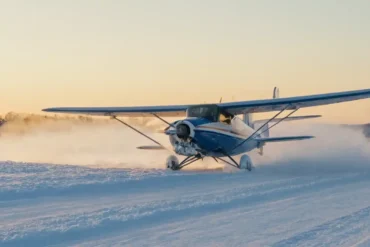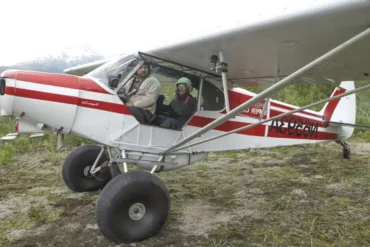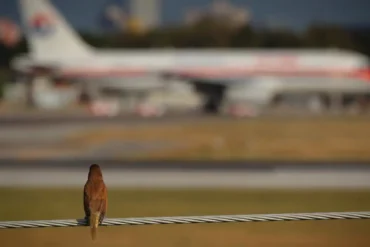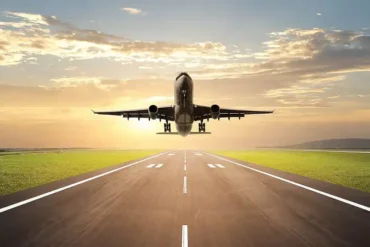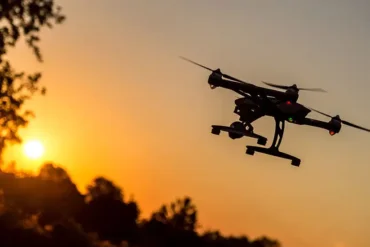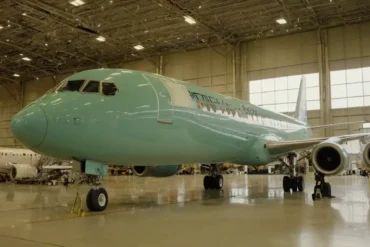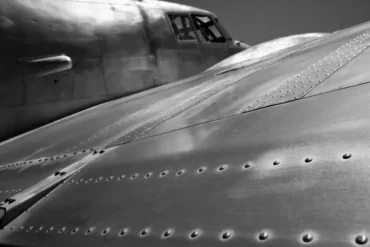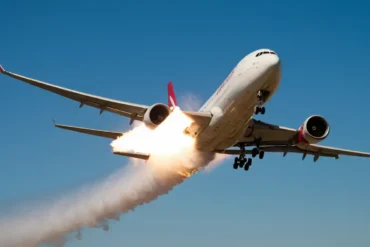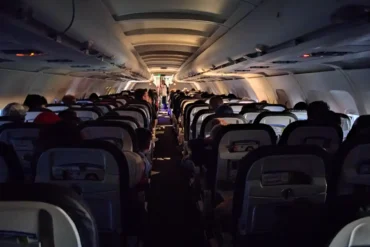You may remember back in 2017 when over 40 flights were canceled in Phoenix during a scorching 122°F day.
Surprisingly, the issue wasn’t the planes overheating or their engines failing. The problem was that the intense heat kept the planes from taking off properly. But why do aircraft struggle to get airborne in extreme heat? Let’s break down the basics of how planes generate lift and how the environment impacts flight.
How Planes Fly: Creating Lift
The key to flight is an aircraft’s ability to make lift. Without lift, there’s no flying!
Lift happens when a solid object like an aircraft wing (called an airfoil) pushes air around it. The wing’s shape guides air downward, pushing the wing upward.
It’s a bit more complex though. This follows Newton’s Third Law about action and reaction.
The angled wing hits air particles and changes their flow and speed. Both the top and bottom of the wing work together to redirect the air, making the lift needed to fly. Normally, this force pushes the plane up.
The wing’s shape guides air down, making high pressure under the wing. On top, the pressure stays lower. This happens because air below travels a shorter distance in the same time, moving slower. That makes it more dense.
Overall, air pushes down more, lifting the plane up. It’s really neat!
This change in air speed causes the main lift force keeping a plane aloft. The key for aircraft is making enough high pressure below the wing to stay in the air.
So creating lift isn’t too difficult – a moving plane will want to fly if conditions are right. But in the wrong conditions, takeoff can be tough.
Why Hot Weather Hampers Takeoff
It’s well known the upper atmosphere has thinner air versus at sea level. The lower density means planes can’t make as much lift up high.
This happens because molecules spread out more, so less air hits the wings.
To compensate, regular engines work harder to go fast. This pushes enough air over the wings for pressure and lift. Interestingly, jet engines can benefit from this (to a degree).
But just like high altitudes, hot weather also reduces air density. As temperature rises, air molecules speed up and spread out more.
In hot weather (and at high altitudes), the less dense air means wings push down on less stuff to make lift. For takeoff in these conditions, an aircraft must go much faster to get enough lift.
But that’s only part of it. Also, the engine gets less oxygen for burning fuel, reducing its power.
Unfortunately, propellers and fan blades also become less efficient, like the wings. The lower air pressure means the engine can’t turn as much power into thrust.
So for takeoff in low pressure, planes need more runway to reach a fast enough speed for the wings to produce enough thrust. And they have less engine power too.
As temperature keeps rising, this effect worsens until takeoff in extreme heat becomes risky for some aircraft.
While they could take off with a long enough runway to speed up, planes still have to climb fast enough to clear obstacles at the runway’s end – not an ideal situation!
What can happen if planes take off anyway in hot weather?
If an aircraft takes off at high altitude and extreme heat, the conditions severely reduce its climb rate, as we discussed. Without enough climb, it could run out of space and potentially crash.
Obviously this poses big risks. A tragic 2012 incident really shows these dangers. A small 165 horsepower prop plane fatally crashed right after takeoff, with footage showing it struggling for power and unable to clear the trees.
The intense heat and high altitude limited the plane’s lift ability, pushing it beyond its maximum density altitude and close to its max takeoff weight. Despite the pilot preparing to abort takeoff, a gust suddenly lifted the plane, making the pilot think it would stay airborne.
However, the aircraft couldn’t climb as expected. Attempting an emergency landing in a field, it hit a downdraft, stalled, and collided with trees, injuring the pilot and passenger. While no one died, the crash strongly demonstrates how hot weather and high altitudes impact aircraft performance.
In 2017, officials in Phoenix smartly grounded flights due to extreme heat, highlighting the real risks involved. As global temperatures increase, the aerospace industry may need to adapt aircraft to handle the changing climate. Until then, grounding planes in extreme heat will likely remain a wise precaution.
Reference
- Boeing News Releases & Statements: Boeing Media Room
- BBC News Article: BBC – World – US & Canada
- NASA – Newton’s Third Law: NASA Glenn Research Center – Newton’s Third Law
- NASA – Airplane Lift: NASA Glenn Research Center – Airplane Lift
- NASA – Thinning Upper Atmosphere Image: NASA Earth Observatory – Thinning Upper Atmosphere
- Physics Stack Exchange – Airplane Struggle at High Altitudes: Physics Stack Exchange
- High Sky Flying – Jet Engines at Higher Altitudes: High Sky Flying
- NASA – Convection Learning Module: NASA Glenn Research Center – Convection Main Page
- World Economic Forum – Extreme Heat and Plane Take-Off: WEF Agenda – Extreme Heat and Planes
- Scientific Electronic Library Online – Article on Plane Performance: SciELO




